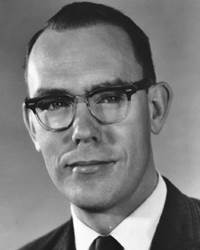April 13, 2023
Ivan Sutherland: The Father of Augmented Reality
In the world of computer science, there are certain figures who have left an indelible mark on the field. One such person is Ivan Sutherland, who is widely considered to be the inventor of augmented reality. Augmented reality is a technology that overlays virtual images or information onto the real world, creating a mixed reality experience. Sutherland’s contributions to this technology have paved the way for its widespread use in various industries today.

Early Life and Education
Ivan Edward Sutherland was born on May 16, 1938, in Hastings, Nebraska. He grew up on a farm and developed an early interest in technology. He attended the University of Nebraska, where he earned a bachelor’s degree in Electrical Engineering. Sutherland then went on to complete his graduate studies at the Massachusetts Institute of Technology (MIT), where he earned a master’s degree and a PhD in Electrical Engineering.
Career and Contributions
After completing his PhD, Sutherland began working at MIT’s Lincoln Laboratory. It was there that he developed Sketchpad, a revolutionary computer program that allowed users to draw images on a computer screen using a light pen. This was the first graphical user interface, and it laid the foundation for modern computer graphics.
Sutherland’s work on Sketchpad caught the attention of researchers at the U.S. Air Force’s Advanced Research Projects Agency (ARPA), who recruited him to work on a new project called the Augmented Human Intellect Research Center. This project aimed to develop technologies that would enhance human cognition and improve decision-making. It was during his time at ARPA that Sutherland began working on what would become his most famous invention: augmented reality.

In 1968, Sutherland published a paper titled “A Head-Mounted Three Dimensional Display” in which he described a device that could overlay computer-generated graphics onto the real world. This device was essentially a pair of goggles that displayed computer-generated images in the user’s field of vision. Sutherland called this device “The Ultimate Display,” and it was a groundbreaking invention that paved the way for the development of modern AR technology.
Legacy
Sutherland’s contributions to computer science have been immense. His work on Sketchpad laid the foundation for modern computer graphics, and his invention of AR has had a profound impact on the way we interact with technology. Today, augmented reality is used in a variety of industries, from gaming and entertainment to healthcare and education.
In recognition of his contributions to the field, Sutherland has received numerous awards and honors throughout his career. In 1988, he was awarded the Turing Award, which is considered to be the highest honor in computer science. He has also been inducted into the National Inventors Hall of Fame and the Computer History Museum’s Hall of Fellows.
Conclusion
Ivan Sutherland is a pioneer in the field of computer science and his contributions have had a lasting impact on the way we interact with technology. His invention of augmented reality has paved the way for a new era of mixed reality experiences, and his work on Sketchpad laid the foundation for modern computer graphics. Sutherland’s legacy will continue to inspire future generations of computer scientists, and his innovative spirit will undoubtedly shape the future of technology in new and exciting ways.